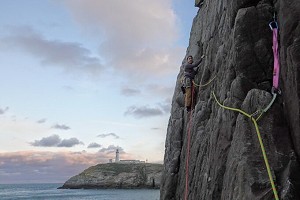
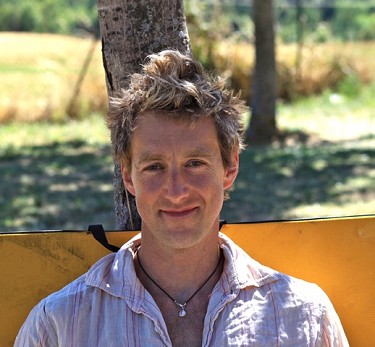
Whilst Charlie's redpoint of Bat Route is not objectively newsworthy, the ascent holds great personal significance. Having suffered with a severe form of chronic arthritis and other health complaints since his late teens - unknown to many who read of his exploits - Charlie has had to manage his training and choose his goals with care. The intensity of hard sport climbing and its effects on the body can be unrelenting - not least if your body refuses to acquiesce to even the most basic activities of daily life, let alone taking on a bouldery 8c.
Despite the setbacks that such an illness entails, Charlie has approached his projects with great determination and exudes a passion for both climbing and the outdoors in all their forms. By taking control of his illness and approaching both his symptoms and training systematically, he is now climbing harder than ever - and enjoying it.
I asked Charlie some questions about dealing with illness and achieving his career best...
'The doctors told me it was unlikely I'd be able to climb hard again as they had to cut through the muscle tissue in my back to access the lungs. That was in February 2000. In November 2000, I did the first ascent of Harder Faster, my first E9. I was pretty chuffed with that.'
What is your illness and how does it affect you?
It’s a type of arthritis called Ankylosing Spondylitis. It primarily affects the spine but also affects the hips and sacroiliac joints, ribcage and the neck. It’s an autoimmune condition, which means the immune system gets a bit out of control and attacks the body thinking that there is a problem there, when in fact it’s the over-aggressive immune function that is the problem. So it causes inflammation, pain and restriction of movement in the joints. Other symptoms are extreme fatigue, food intolerances and weird brain fogginess.
When were you first diagnosed?
I was diagnosed with a similar illness called Reiter's Syndrome in 1990 when I was 17. I was told that it might develop into AS as I got a bit older and sure enough, in 1995 that happened.
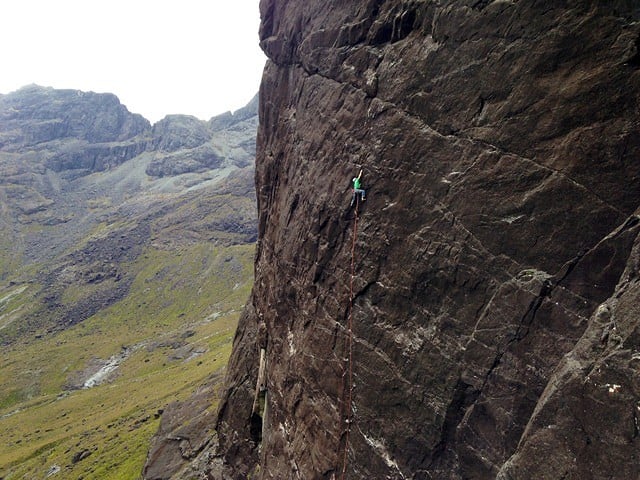
What was the initial advice from doctors about continuing to climb?
Initially the first GP I saw told me that I was gonna need to wear a body brace to stop my spine from deforming and twisting out of shape, which was pretty alarming, but that pretty quickly turned out to be rubbish. The rheumatologists then said the exact opposite - to keep moving and exercising as much as possible and keep it mobile, as long as the pain didn’t get too much. I had to have physio twice a week for years too. But climbing, luckily, was always encouraged. The only aspect of climbing that was a problem was bouldering, as falling and hitting the ground even from a short height was too jarring and painful.
How did you cope with climbing post-diagnosis? I hear you gave up for a year or so and moved from Sheffield to London to focus on your career. How did you decide when to get back into it, and how did you manage both mentally and physically?
Initially I was learning to cope with it in all aspects of life, not just climbing. But because it's a progressive disease that gradually impairs you, the hinderance to climbing was a gradual one. In many ways I didn’t really notice it was a problem, because I was only really a beginner before I was diagnosed and so didn’t know any different. It’s not like I was pining for the good old days of crushing pre-diagnosis. I gave up climbing for a year or so as I’d become bored with the endless emphasis on training and competitiveness that seemed to dominate the scene at the time. Plus I was broke and needed to work, so I started working in the film industry as a freelancer. When I started again I went and did all the classic easier routes I’d not done before, mostly at Pembroke and on Peak grit. Being freelance allowed this. Easier climbing was obviously easier physically, but mentally it felt great to do stuff that didn’t practically break me! I realised that I could really enjoy climbing at a chilled level, which ironically was a great platform for feeling like I could gradually get back to climbing harder again.
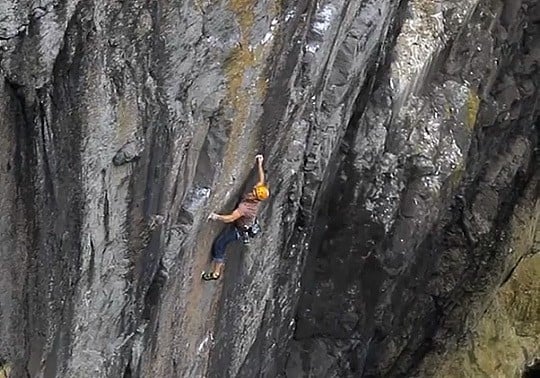
There was a specific turning point though, in around 2001. The pain had been getting worse and worse and I’d been upping the amount of anti inflammatories I was taking and the doctors had put me on stronger drugs. I was walking down from Cloggy with a mate called Harry Pennells and my back was hurting so much that it went into spasm. Harry had to carry both packs and I had to crawl back to Llanberis. After this I applied to get approval for a new type of drug called Anti TNF. I got turned down because it was too expensive for the NHS. The rheumatologist told me to reapply next year when ‘hopefully’ the AS would have become worse enough for approval.
It seemed crazy to be waiting for things to get worse before making them better. I felt pretty angry and dejected, so at this point I thought I’d try and take matters into my own hands and started experimenting with alternative treatments, most of which haven’t worked at all, some of which made me worse! But in 2005 I changed my diet to eliminate nearly all starchy carbs, dairy and reduced sugar to a minimum and it helped massively. The other major factor that has worked amazingly for me is a process called chelation, which I won’t go into here as it's a long story. I have slowly been able to reduce the amount of drugs I have to take, and these days I haven’t taken one in over a year. Last week the doctor cancelled my repeat prescriptions for Diclofenac and Naproxyn as she deemed them no longer necessary.
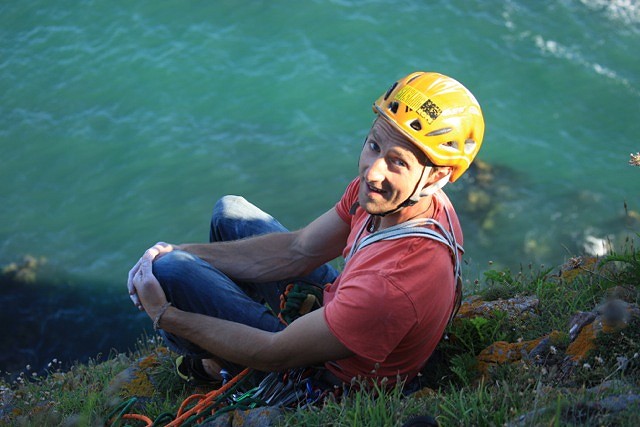
I hear you have some other rather interesting health stories?
Yeah the plot thickens…In 1998 my right lung collapsed (bizarrely I was cooking cheese on toast at the time but this was before I knew of the perils of wheat and dairy). I was hospitalised for five days with a chest drain to allow the lung to re-inflate. It happened again the following year, so after this I was told I needed an operation called a pleurectomy where they remove the lining of the lung and ‘stick' it back to the chest cavity. I had the op and as I was convalescing in hospital, the left lung collapsed too - so they wheeled me back in for take two on the other side. The doctors told me it was unlikely I'd be able to climb hard again as they had to cut through the muscle tissue in my back to access the lungs. That was in February 2000. In November 2000, I did the first ascent of Harder Faster, my first E9. I was pretty chuffed with that.
Your main focus has been on trad over the years. Is trad easier to manage with your arthritis? Does the psychological side make it as fulfilling (or maybe more so) than ticking a hard sport route for you?
My introduction to climbing was via trad and before climbing I was into hill walking so I’ve always loved the mountains, which is where so much of the UK trad is. But yes, trad is physically easier which suits me better and doesn't highlight my weaknesses so much. When the body is very inflamed, it doesn’t respond to training so well and as such I’ve always been pretty weak. I really enjoy sport climbing but I’m not particularly good at it. It’s true though, regardless of how well I perform at the different types of climbing, trad is just better isn’t it!
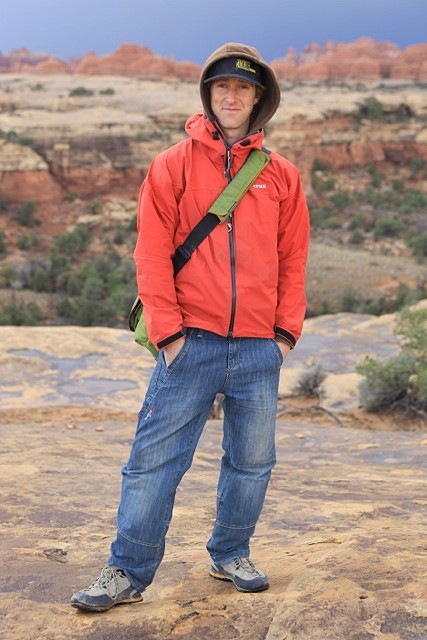
You've just ticked your hardest sport route to date - Bat Route 8c at Malham. Tell us a bit about the journey to completing it - how did you manage to up the training with your arthritis?
In the last year or so I’ve managed to get the AS into remission enough to be able to train harder and more frequently. So I’ve been able to push my sport grade a bit as a result. I did my second 8b+ earlier this year - 17 years after my first, and then my first 8c with Bat Route. Obviously I’m focussing on longer, pumpier routes that suit me more. There are other factors as well though, like the fact that I moved from Bristol to Kendal so have the best UK sport climbing pretty much on my doorstep now, and I’ve learnt a lot more about training and what works for me specifically. One of the things that helped me up the training was being even more strict with my diet. I’ve been used to going without carbs for many years now, but really focussing on eating a few simple foods and a higher fat content has helped. I’ve systematically plodded away at the chelation therapy which is a slow process, but over the years I have got better and better. I also increased the amount of good probiotic supplements and was making ‘bone broth’ from organic chicken bones to help heal the gut lining, which in turn reduces inflammation. Weird? Yes, and hard for some people to take seriously. Chelation is a bit too complex a subject to go into here, but it worked for me and is still working.
Did you ever expect to tick such a hard sport route? How did it feel to top out?
I’d always thought that it was possible in theory. I mean, everything’s possible in theory. But when I actually started seeing results and everything coming together, I kinda couldn’t believe that I wasn’t getting injured and exhausted. It did feel pretty special to top out. Still does actually. But of course, I straight away started thinking that it wasn’t that hard and that I could climb harder. Standard stuff.
'The discipline required to do the diet can be hard long term, but I’m grateful to be drug free and wouldn’t have it any other way, even though I’m the worst dinner guest on the planet.'
You've been ticking your way through some top-end trad routes lately - including Talbot Horizon and Rare Lichen. Were you aiming to push your trad climbing too, or is this a side-effect of working towards Bat Route?
I’ve always been into trad as the main event. Last year I didn’t really headpoint much and mostly focussed on onsighting, so this year I wanted to put some time into repeating some of Dave’s neglected E9’s. I’m not very good at focussing on one thing long term as I get Fear Of Missing Out on all the other stuff. This year I knew I had to be a bit more disciplined and focussed on Bat Route to get it done, but the payback is that from all that training the trad stuff should feel easy. That’s the theory anyway.
What did you make of Talbot Horizon - I hear you were very close to getting the second ascent just before Jordan finished it?
I was keen to try Talbot because it was unrepeated, it is on East Buttress (which I’d never climbed on) and it was written up as ‘unequivocally the boldest route in the Lakes’. Who could resist? Jordan was keen for some of Dave’s routes too and agreed that it’d be fun to hook up and check it out. He’s given most of the story in his interview after his ascent, but to cut a long story short, we went up and spent most of the day cleaning it and sussing the sequence. The route breaks down as a relatively easy start to a suspect block, then a four move boulder problem, followed by an easier finish. It seemed pretty doable. However, when we came back to do it, I’d been a bit over-excited and trained too hard in the days before, without taking enough rest (the flip side to being able to handle more training). So the boulder problem on Talbot felt too hard to justify getting on the sharp end. Jordan did it in style, which was annoying because that meant I’d lost my climbing partner for a return visit! Funnily enough it’s tricky finding partners who are keen to walk up Scafell with an optimist's forecast to hang around and belay all day, no matter how much beer you promise them.
Luckily I got a call from Jules Lines, who was coming down from Scotland and was happy to have a relaxed day in the mountains. He doesn’t drink so I didn’t have to buy him a pint either. The ascent wasn't very relaxed though. We sat in the cloud for three hours and then got a short window before more mist was forecast. I top-roped it fine and then pulled the ropes to lead it. As I set off, the cloud came in again and the rock got pretty slick from the moisture. My foot greased off on the crux and I took the ride. The crucial gear is a sling over the loose block and a small cam in a flared placement. Both held and the fall was fine. I pulled up and down-climbed taking the gear out, waited 15 minutes and the cloud lifted again, got straight back on and did it before the cloud came down again. A really tiny weather window.
The cam I used in the flared slot was a micro Totem cam. It held in the flare amazingly well and I would go so far as to say it was bomber. That coupled with the fact that the climbing actually isn't very hard (a four move boulder in the middle of easy climbing) and the fact that I flipping tested that block and it held, makes me believe the route is E8. Dave wouldn’t have had that cam and he wouldn't have known whether the block would hold so perhaps he thought E9 appropriate. Maybe that block is like the Partheon Shot flake and it’ll go at some point, but the route’s not hard enough to be E9 in my opinion.
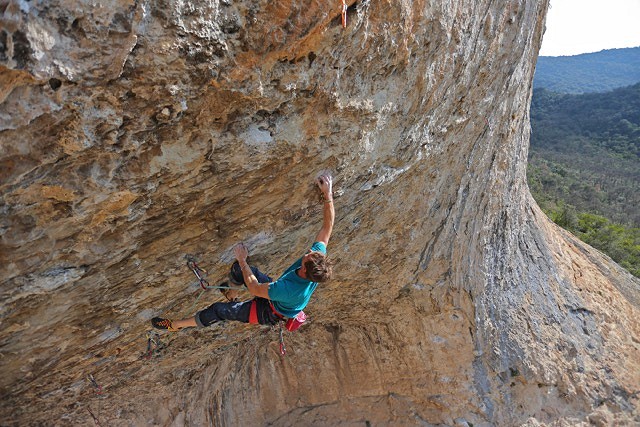
What would your advice be to someone struggling with a similar illness?
Mostly clichés but here goes anyway...be very honest with yourself about what works for you. Do your own research and don’t be afraid to experiment. Try one thing at a time so that you know exactly what works and what doesn’t. Be patient and don’t give up. I’m quite grateful that I was turned down for the Anti TNF drugs as it’s made me discover all kinds of truths about health, diet, that I doubt I would have otherwise. Anti TNF treatment is now available to nearly all patients at a much lower cost to the NHS, so if you need it and it works for you then great. Some of the side effects of the drugs aren’t great and you have to weigh up the best options according to the severity of the AS. Diet, periodic fasting, supplementation & chelation therapy have worked for me though. The discipline required to do the diet can be hard long term, but I’m grateful to be drug free and wouldn’t have it any other way, even though I’m the worst dinner guest on the planet. Check out the website www.kickAS.org
What's next on the list for you?
Just taking each day at a time, but I’m off to Utah in a few weeks to try and climb cracks. Don’t expect any big news.
Watch a video of Charlie on the third ascent of Talbot Horizon below:
Charlie is sponsored by: Arc'teryx, DMM, La Sportiva, Lyon Outdoor, Beta Climbing Designs, Climb On, Snap and Sterling Rope
- SKILLS: Top Tips for Learning to Sport Climb Outdoors 22 Apr
- INTERVIEW: Albert Ok - The Speed Climbing Coach with a Global Athlete Team 17 Apr
- SKILLS: Top 10 Tips for Making the Move from Indoor to Outdoor Bouldering 24 Jan
- ARTICLE: International Mountain Day 2023 - Mountains & Climate Science at COP28 11 Dec, 2023
- ARTICLE: Did Downclimbing Apes help Evolve our Ultra-Mobile Human Arms? 5 Dec, 2023
- ARTICLE: Dàna - Scotland's Wild Places: Scottish Climbing on the BBC 10 Nov, 2023
- INTERVIEW: Loki's Mischief: Leo Houlding on his Return to Mount Asgard 23 Oct, 2023
- INTERVIEW: BMC CEO Paul Davies on GB Climbing 24 Aug, 2023
- ARTICLE: Paris 2024 Olympic Games: Sport Climbing Qualification and Scoring Explainer 26 Jul, 2023
- INTERVIEW: Malcolm Bass on Life after Stroke 8 Jun, 2023



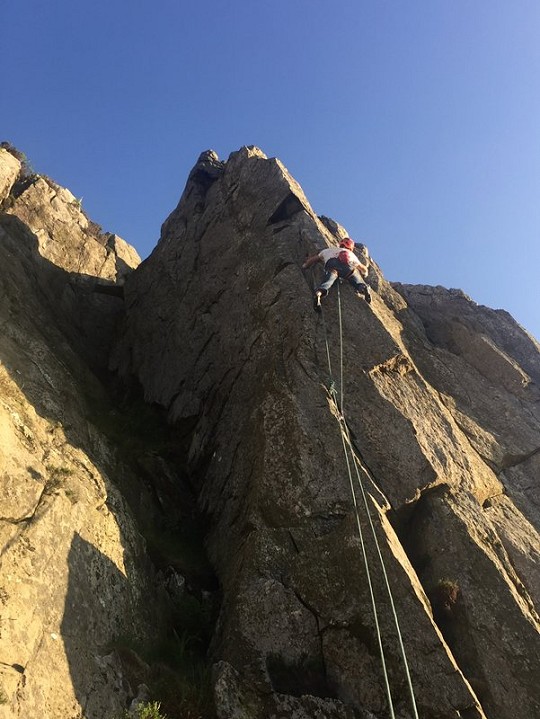
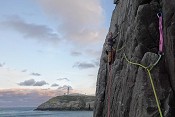










Comments